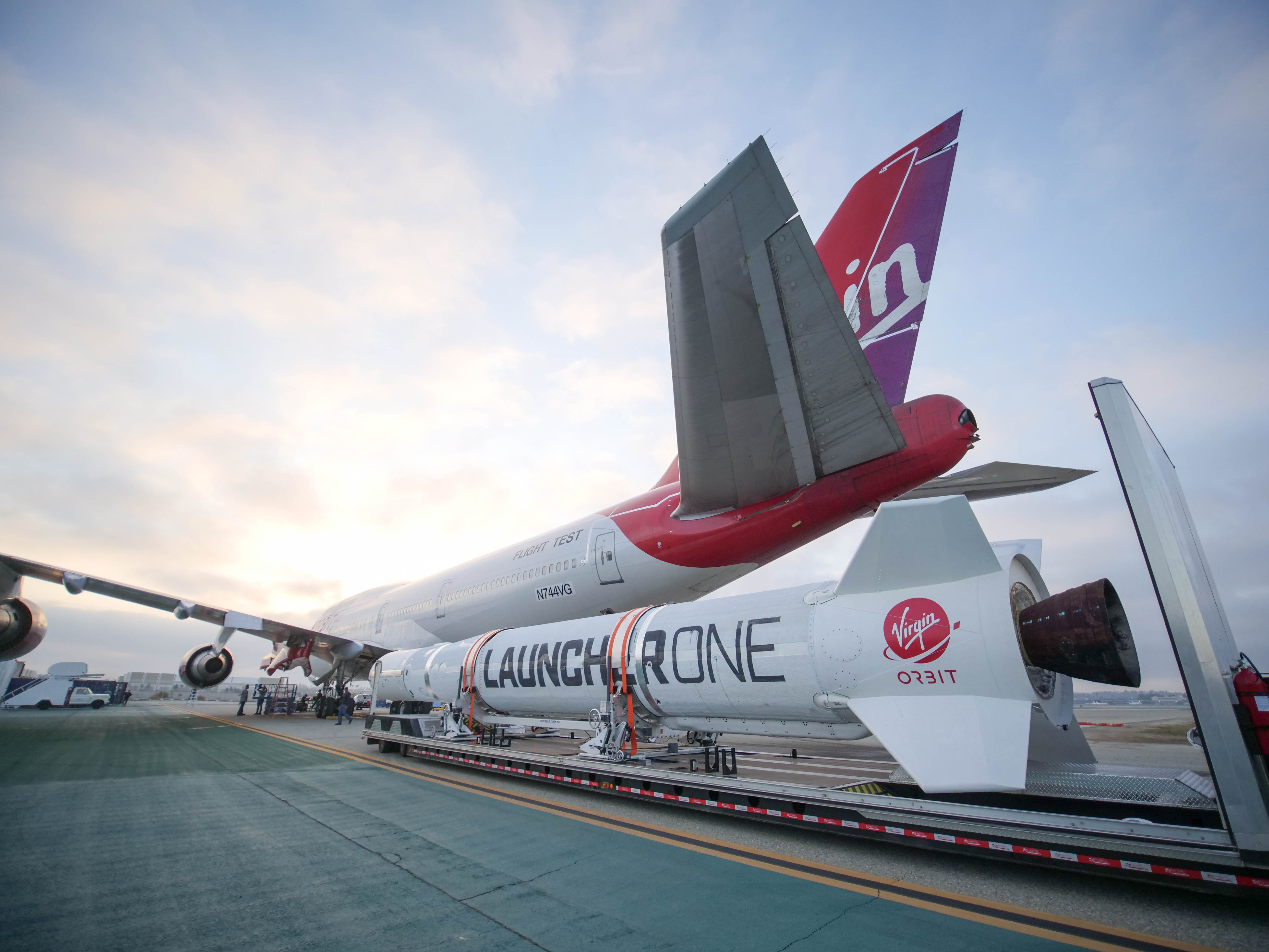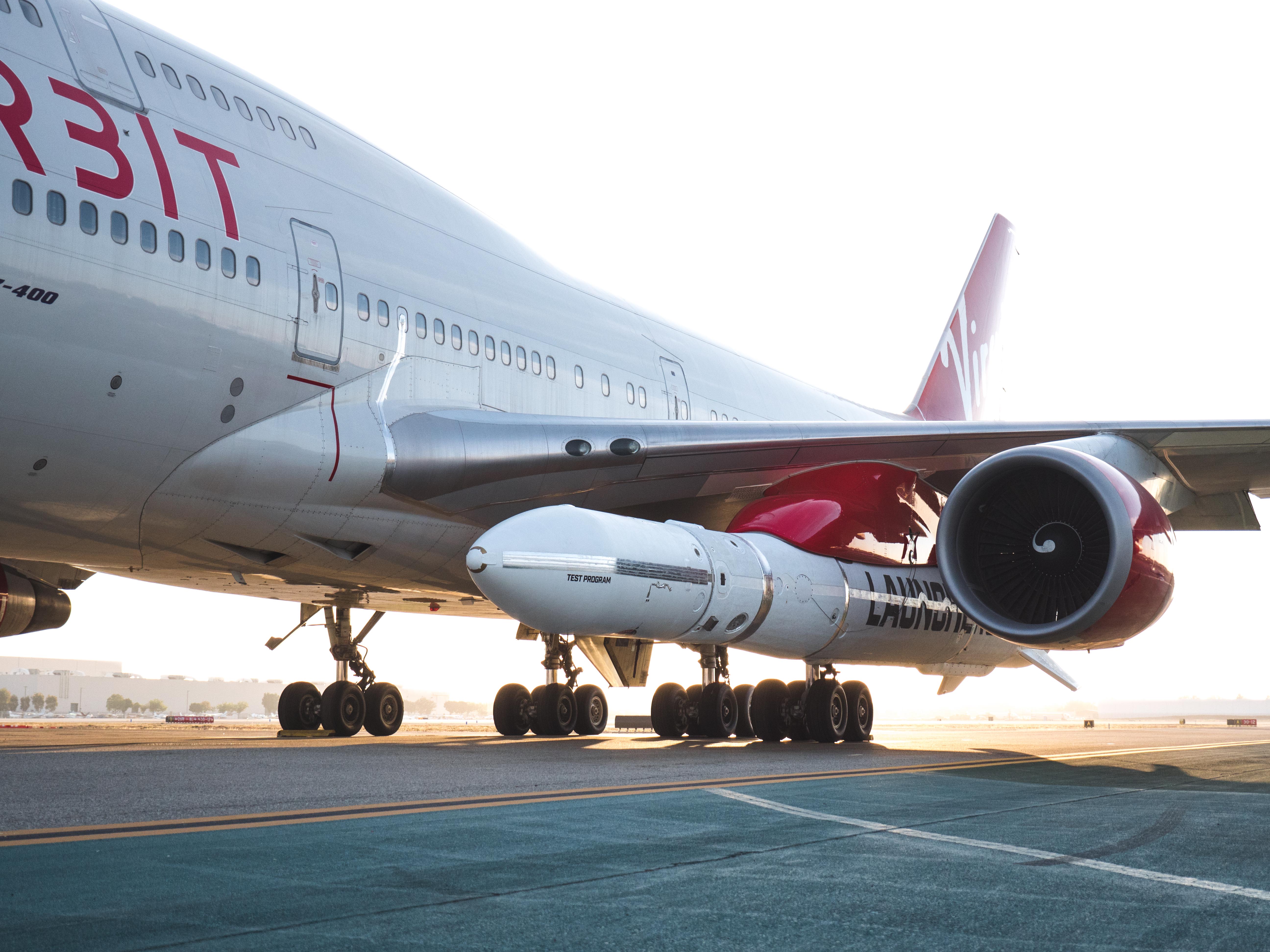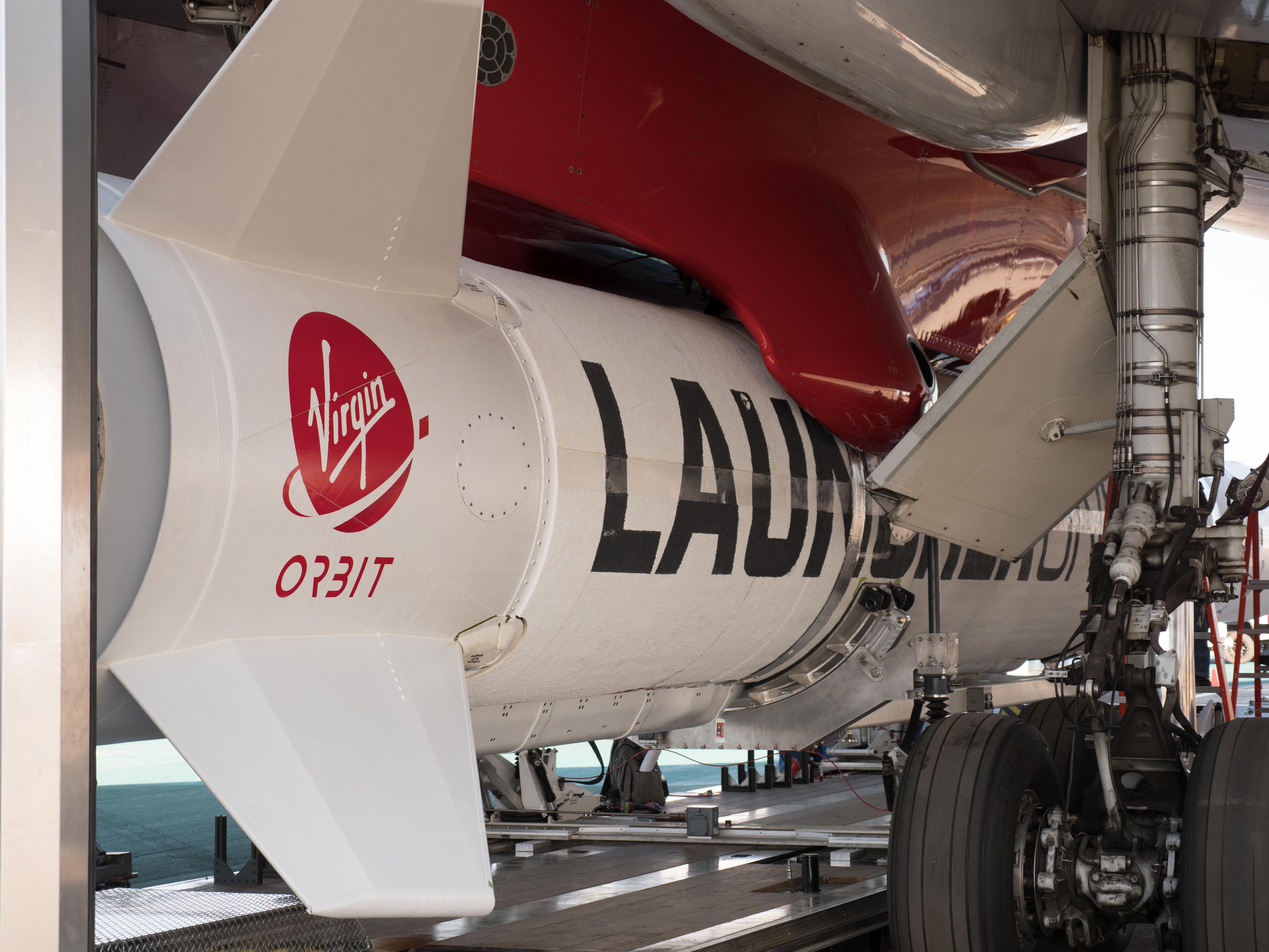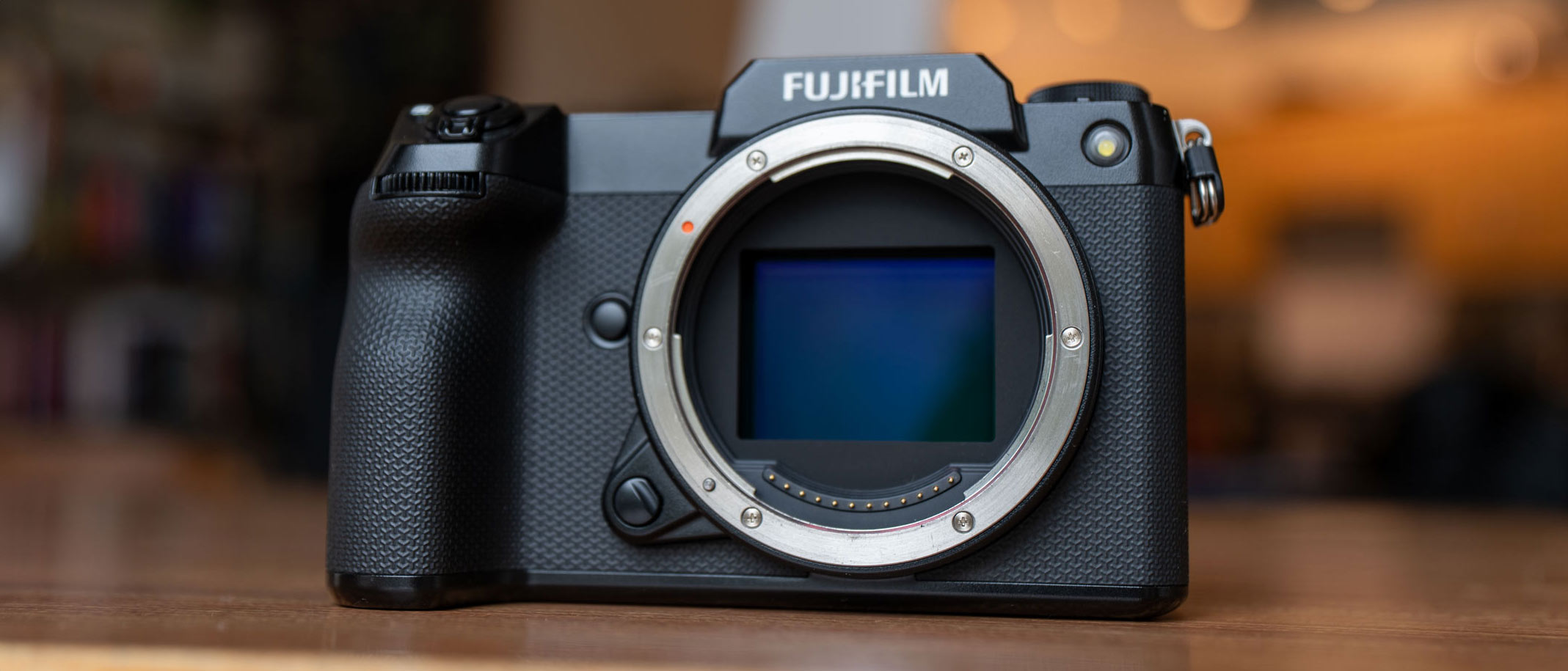Virgin Orbit Just Attached a Rocket to Its Cosmic Girl Mothership for the 1st Time
Virgin Orbit has put its satellite-launching system together for the first time.
The California-based company — part of British billionaire Sir Richard Branson's Virgin Group — mated a LauncherOne rocket with its carrier plane, a modified 747 jet called Cosmic Girl, at Long Beach Airport on Wednesday (Oct. 24).
"The team were carrying out the integration check of the rocket with Cosmic Girl to verify [that] mechanical, electrical, software and dynamics all work together for the first time," Branson wrote in a blog post today (Oct. 26). "It's an incredibly exciting moment for us, as Virgin Orbit's first test flights move ever closer." [Gallery: Virgin Orbit's LauncherOne Rocket for Satellite Missions]
That test-flight campaign will begin with "captive carry" missions, in which LauncherOne will stay attached to Cosmic Girl from liftoff to landing. The next step will be drop tests, which will allow engineers to study the rocket-release mechanism and LauncherOne's flight through Earth's atmosphere, Virgin Orbit representatives said.
Branson anticipates moving through these milestones rather quickly; in today's blog post, he predicted that LauncherOne would reach orbit "early next year." (That orbital pioneer won't be the same rocket that linked up with Cosmic Girl this week, however; the latter booster's final flight will be a drop test, Virgin Orbit representatives said.)
The 70-foot-long (21 meters) LauncherOne can deliver satellites weighing up to 1,100 lbs. (500 kilograms) to a variety of low Earth orbits. Cosmic Girl will carry the booster to an altitude of about 35,000 feet (10,700 m), at which point LauncherOne will separate and make its own way to space.
Breaking space news, the latest updates on rocket launches, skywatching events and more!
This air-launch strategy has the advantage of flexibility, Branson said.
Cosmic Girl "can fly thousands of miles in any direction at 24 hours' notice to deliver to the right orbit," Branson wrote in his blog post. "Currently, people have to wait between 18 and 24 months for manufacturing and a ground launch."
Rockets have launched in midair before. The Pegasus rocket, which was developed by Orbital Sciences Corp. (now part of Northrop Grumman), has more than 40 flights under its belt. And there are more to come. Pegasus will be used by Stratolaunch Systems, the satellite-lofting company established in 2011 by the late Paul Allen.
Virgin Orbit's sister company, Virgin Galactic, will launch from midair as well. Virgin Galactic's six-passenger spaceliner, SpaceShipTwo, will blast itself to suborbital space after being carried aloft by a plane known as WhiteKnightTwo.
Mike Wall's book about the search for alien life, "Out There," will be published on Nov. 13 by Grand Central Publishing. Follow him on Twitter @michaeldwall. Follow us @Spacedotcom or Facebook. Originally published on Space.com.

Michael Wall is a Senior Space Writer with Space.com and joined the team in 2010. He primarily covers exoplanets, spaceflight and military space, but has been known to dabble in the space art beat. His book about the search for alien life, "Out There," was published on Nov. 13, 2018. Before becoming a science writer, Michael worked as a herpetologist and wildlife biologist. He has a Ph.D. in evolutionary biology from the University of Sydney, Australia, a bachelor's degree from the University of Arizona, and a graduate certificate in science writing from the University of California, Santa Cruz. To find out what his latest project is, you can follow Michael on Twitter.




